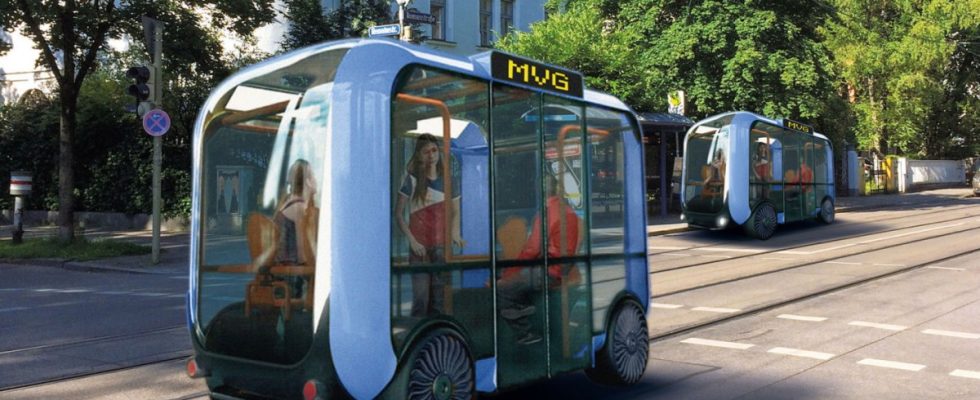Buses that operate without a driver: What sounded like a utopia a few years ago is soon to become a reality in Munich. From the end of this year, the Munich transport company (MVG) wants to test autonomous buses on public roads. The test run is part of the “MINGA” research project, in which 15 partners from administration, research, business and industry work together. These include the Technical University of Munich (TUM), bus manufacturers and the Munich district.
The mobility department presented the project last year. Today, mobility officer Georg Dunkel says that he used to be rather skeptical. Now he firmly believes that autonomous driving can become established. The only question is: when.
According to MVG, approval for passenger operations could be achieved by the end of 2025. But a longer planning phase is followed by a cautious beginning: First, an automated solo bus is to be tested in the north of the city on line 178. In the south, so-called bus platoons will run on line 197. These are two buses one behind the other that are exclusively digitally coupled to each other. The rear part is something like a trailer that is connected to the front bus with an electronic drawbar.
The tests should initially be tested in intervals and off-peak times, without transporting passengers. For example, extensive testing is carried out to determine how the stops can be safely controlled in automated operation. The lines were selected so that they were as varied as possible (multi-lane streets, traffic-calmed areas, crossing tram tracks, dense settlement structure, relevant traffic volume). This means that a wide range of operational scenarios can be tested under realistic conditions. Approval from the Free State for the detailed routes is still pending.
But why is the city even testing driverless buses? Among other things, transport companies could use autonomous vehicles to get the constant problem of staff shortages under control. On the other hand, the virtually coupled buses can also drive individually and can therefore be used more flexibly. In times with fewer passengers, two solo buses would be available instead of one long articulated bus.
During the testing phase, safety drivers will initially be on board. Before the autonomous buses can be used in regular operations, it is important to find out, among other things, how automated vehicles can fit into the regular timetable and in which operating areas the use of automated vehicles has proven best.
But autonomous vehicles alone are not enough. In order to ensure safe operation, the infrastructure must be adapted, and the project partners are still working on this. Starting this year, concepts for getting to stops, accelerating at traffic lights and barrier-free access will be examined at one of the test intersections at the Technical University in Taufkirchen/Ottobrunn.
From the mobility department’s point of view, what is particularly interesting are smaller autonomous buses that can be ordered “on demand” and could thus supplement local public transport. MVG boss Ingo Wortmann is also convinced that the autonomous public transport service can become more flexible and attractive in the future.
For MVG and other transport companies, driverless systems would pay off in the long term because of the lower operating costs. The project partners want to conduct surveys to find out whether the whole thing resonates with passengers. Bernd Rosenbusch, Managing Director of the Munich Transport Association (MVV), is convinced that autonomous driving will be just as easy and convenient to use as all other means of transport in the MVV.

